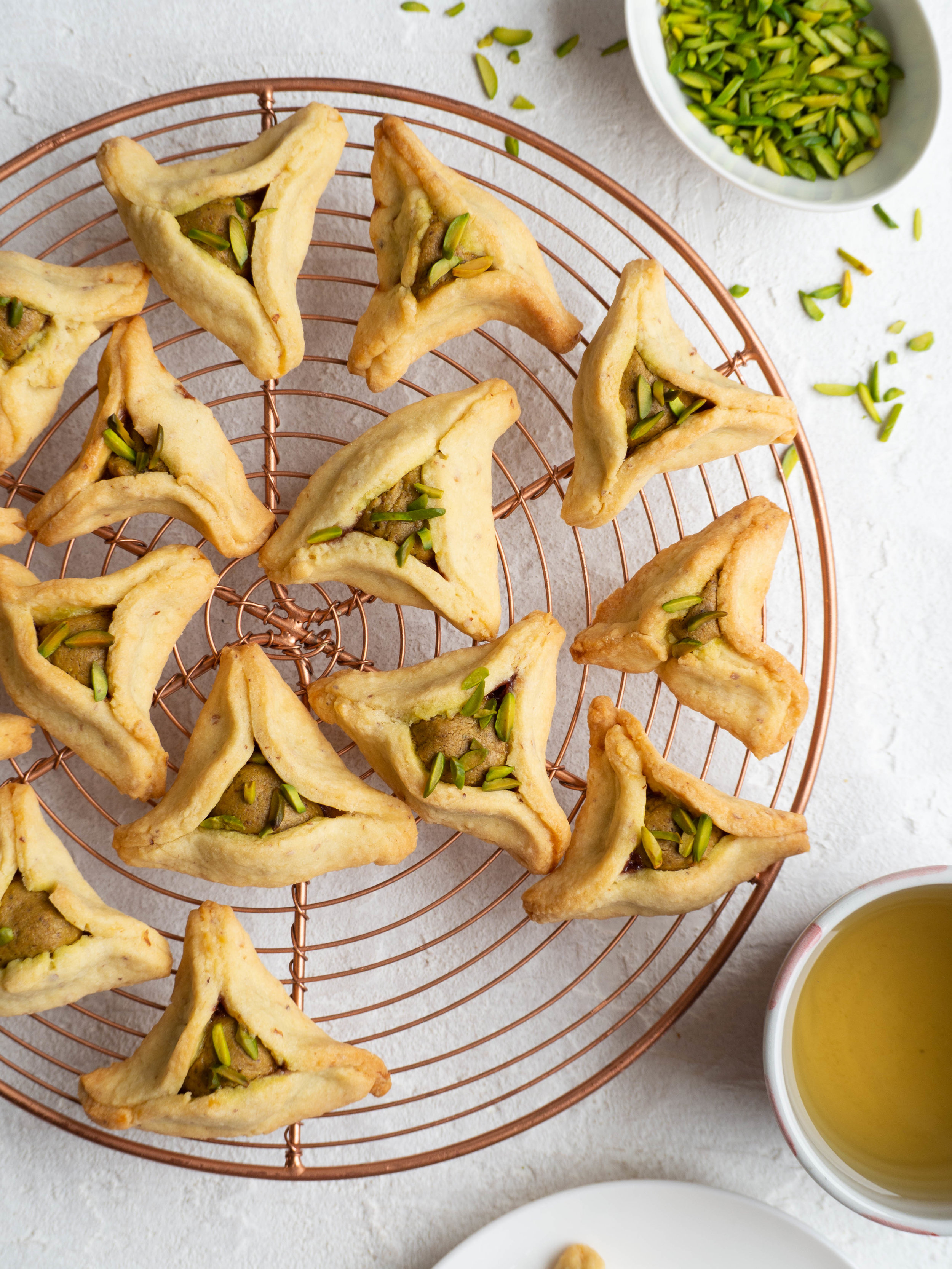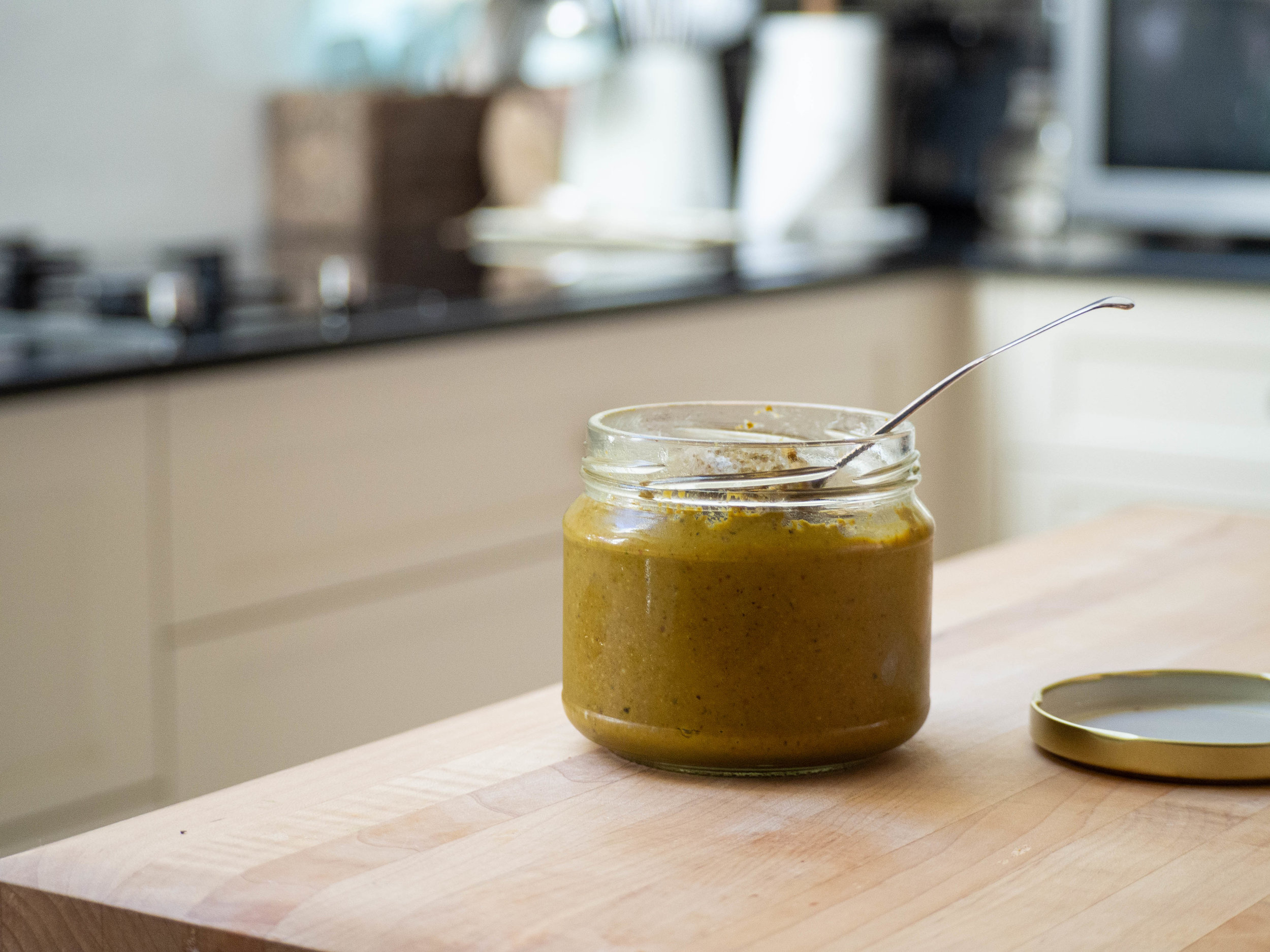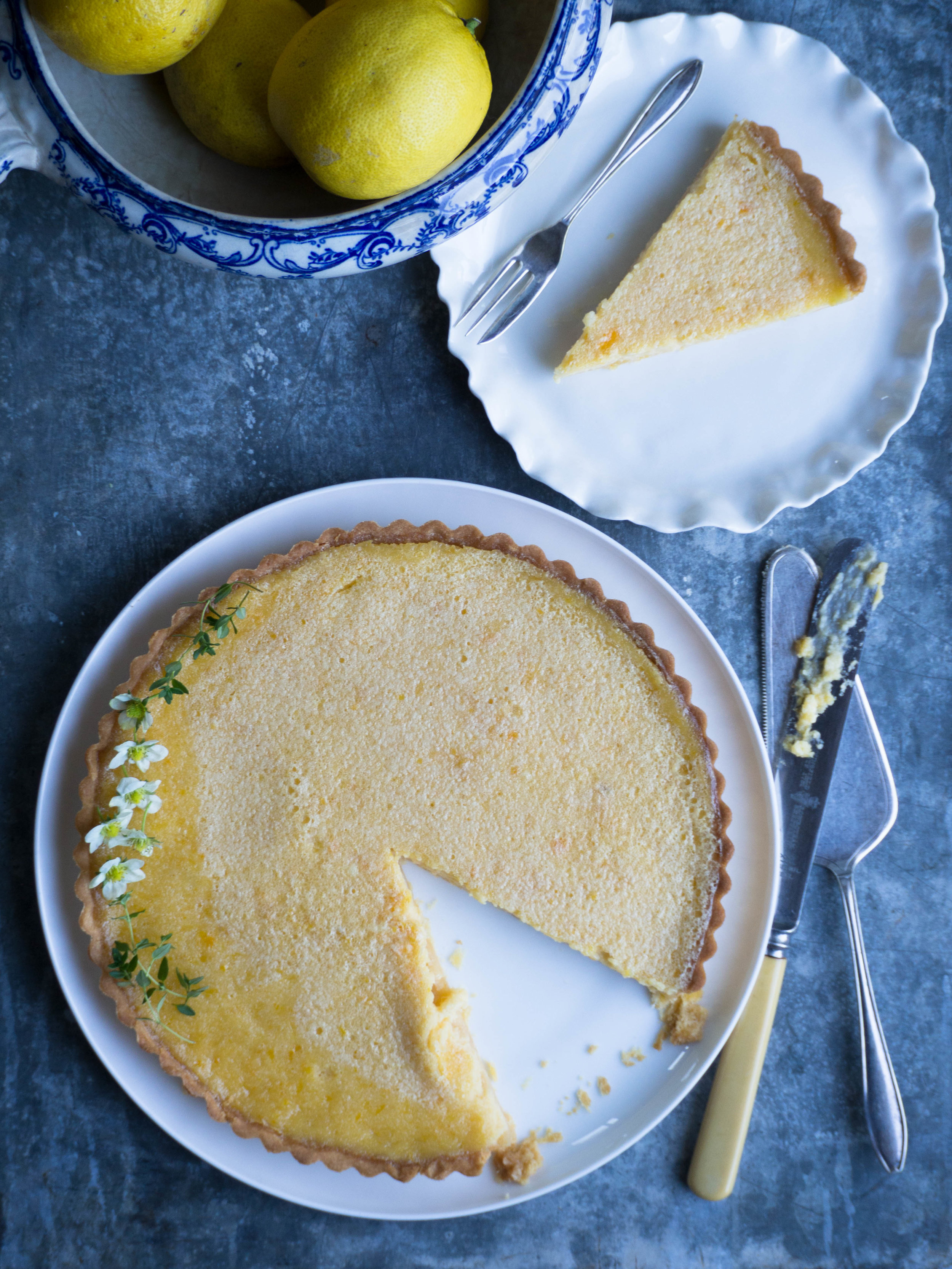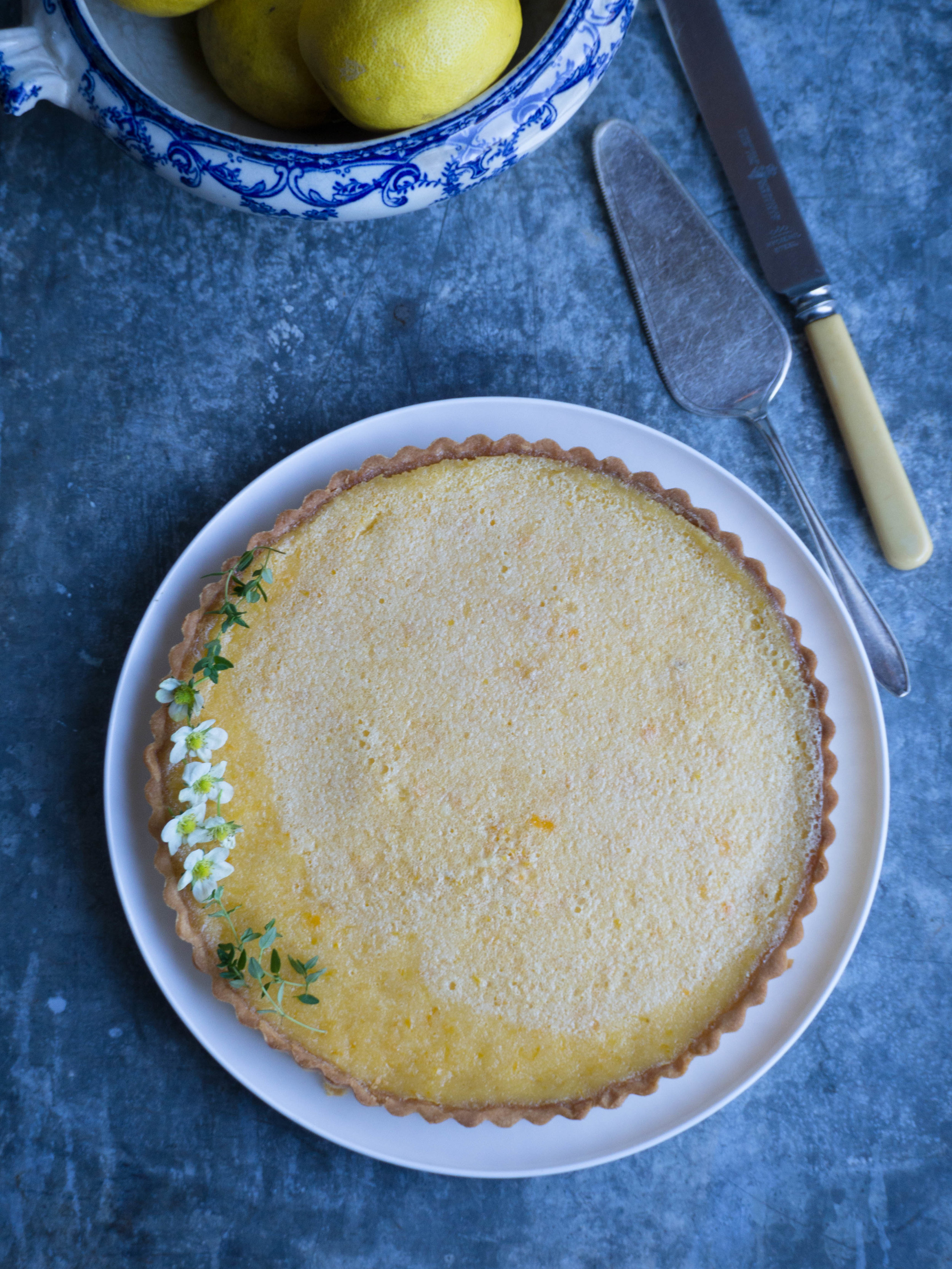I had this recipe in mind to make at Purim a couple of years ago, and for some reason didn’t get around to it until this year. I originally shared this recipe (if I can really call it that, as it’s just an assembly job) over on Instagram as part of my ‘Year of Everyday Bakes’ series.
As I explained in this post, I am sharing a recipe a week that is simple, easy and could fit into your everyday life. I hope it inspires you to bake a little more without adding any stress to your day.
Hamanstachen are small triangle shaped pastries, some are more biscuit like as these are, while there are other varieties that use a yeasted dough. They are traditionally made and eaten during the Jewish holiday of Purim, and while Biscoff hamantaschen are in no way traditional, like I said they are very easy to make and require much less time than making each element from scratch.
This recipe is very low stress as I am asking you to use bought pastry, though homemade would be lovely too, and Biscoff spread. All pre-made, all easy but most importantly all tasty. You can think of these like a little free form individual tarts if you like (maybe an alternative to a jam tart or similar?), a quick and easy baking project with very tasty results
Biscoff Hamantaschen
Ingredients:
1 sheet shortcrust pastry (approx.435g - I used Careme brand, if you use another brand who make smaller sheets of pastry you made need 2-3 sheets).
1 jar Crunchy Biscoff Spread
1 egg, beaten
Sprinkles, optional
Method:
Line three large baking trays with baking paper.
Leave the pastry on the plastic sheet it comes on, and using a 7.5-8cm round biscuit or scone cutter, cut out rounds of the pastry and place on the prepared trays. Cut out the rounds as close toegtehr as possible, so you have minimal pastry scraps left over.
Re-roll the remaining pastry - you can do this inbetween the plastic sheet the pastry came on so you don’t have to flour your bench or rolling pin - and cut out the remaining pastry.
Brush the beaten egg around the edges of each pastry round (you won’t use all of the egg). Drop teaspoonfuls of the Biscoff spread (no more than 1 tsp per pastry round, you shouldn’t need the whole jar - I used about 3/4 of one jar) into the centre of each pastry round. Then pinch the rounds into triangle shapes, esnure the corners are well sealed. You can brush with more egg if needed. See this post for more detailed instructions on how to fold the hamantaschen* - if you create a smaller hole in the centre and fold your hamantaschen up tigther than what I have done here, it will also help them not break open or spill over in the oven - you can see in the photos some of mine have spilled a little.
Place the trays of hamantaschen in the fridge for at least 30 minutes so the pastry can chill. Do not skip this step - this, along with not overfilling the hamantaschen will help ensure your hamantaschen don’t spill over and loose their shape when baking.
Preheat oven to 180 degrees Celsius.
After at least 30 minutes, remove the trays of hamantaschen from the fridge, sprinkle with sprinkles and bake for 15-20 minutes or until the pastry is golden.
Once removed from the oven you can sprinkle more sprinkles over the hamantaschen for an extra pop of colour. Allow the hamantaschen to cool on their trays.
Hamantaschen will store well in an airtight container for at least 7 days.
Makes about 24 hamantaschen - however this may vary depending on your cutter size and type of pastry used.
*for a great video demonstration of how to fold hamantaschen (plus another great recipe as well as more good hints and tips at making them) check out Lisa Goldberg’s (of the Monday Morning Cooking Club) Walking Up An Appetite YouTube Channel, as she has a great YouTube live video of making hamantaschen that shows how to fold them really well.



















































